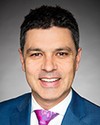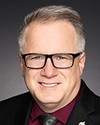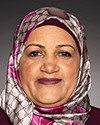Mr. Speaker, before I begin to speak about the Speech from the Throne, I hope members will indulge me in a bit of reflection and a few personal comments.
First, I am honoured and humbled to be here. It is a very special privilege to be a member of the House of Commons. Indeed, I recall that even this space, when I was a young staffer here in 1979, was a courtyard. I remember having my lunch on the picnic table somewhere around here. Boy, has this place changed.
I was brought here by my predecessor in 1979, Mr. Girve Fretz, who represented the riding of Erie, now my riding of Niagara South. I was then mentored by a member of Parliament from Prince George—Bulkley Valley, Lorne McCuish. I spent many years with this gentleman, and he was indeed a huge influence on my life and one of the reasons I am here today.
Getting here was no easy task, with a campaign of hundreds of volunteers. I want to thank a few key members of my team: Marisa, who is here today, Hunter, Jason and Donna. A special thanks goes to Teresa, also a former staffer of Girve, who encouraged me over four decades in this journey.
A special thanks also goes to Chris van Kralingen at Barber Hymac in Port Colborne, who hosted our leader at his plant and is a strong champion of our effort in Niagara South. I appreciate his support and counsel.
I give a very special thanks to my wife, Monica, for the love and support, which carried me through a year and a half of door knocking, sometimes in pretty incredible weather, along the shores of Lake Erie. I am forever grateful for that, as well as the support from our kids and our family and friends from coast to coast.
I also want to thank my predecessor, Vance Badawey, who was a member opposite, for his 10 years of service in the old riding of Niagara Centre.
The new riding of Niagara South includes Thorold, Welland, Port Colborne and Fort Erie. It has a rich history of industrial excellence and strength, with companies that helped build Canada.
In a post-World War II Canada, Niagara was the epicentre of industrial growth and middle-class prosperity. Back then, Niagara was the new frontier, and I believe now that it is the last frontier that can lead Canada again in the years ahead, provided we are focused on key economic priorities through the strength of our residents and our workforce.
Niagara South is also a border riding. The Peace Bridge in Fort Erie sees over $40 billion of economic activity crossing back and forth between Canada and the United States, the second-busiest border crossing in Canada.
Our beautiful Lake Erie shoreline leads us to the Welland Canal, the backbone of the Great Lakes economy. Around 80% of the St. Lawrence Seaway's economic activity passes through the Welland Canal, starting in Port Colborne and intersecting three communities in my riding. When I was growing up, I was often frustrated when the bridge was up in downtown Port Colborne. Watching one of those huge lakers slowly pass through the locks as a kid was a bit frustrating, but today I am grateful to see that site going through the middle of our downtown and the middle of the Niagara region, because it is such an economic performer and job creator in our region.
As we focus on lowering internal trade barriers, we need to understand that Canada's marine sector is the key driver of economic growth, with a strong potential to enhance internal trade, support nation-building projects and strengthen national supply chains. I know this because in my community in Niagara, we have one of Canada's key marine hubs, supported by companies such as Algoma and Allied Marine. The role of short sea shipping in the Great Lakes and our coastal regions underscores the importance of reducing regulatory barriers to fully develop our Canadian marine potential. All the leaders in my riding recognize this as well.
This may be my maiden speech, but I offered mayors in my riding an opportunity to put their views on the record today as I speak here for the first time.
Port Colborne mayor Bill Steele describes our city as a “close-knit community with a proud marine heritage celebrated through our signature Canal Days Marine Heritage Festival. As part of the new Niagara South riding, Port Colborne is poised for transformational growth.”
Thorold mayor Terry Ugulini states, “The Welland Canal Corridor mayors are committed to developing Niagara Ports into something special. On an international scale, the Thorold Multimodal Hub is an excellent example of that success.”
Welland mayor Frank Campion says, “Welland is a city built on resilience, diversity and opportunity, situated along the recreational Welland Canal that winds through the heart of our community. From our rich industrial heritage and ongoing industrial renaissance to a vibrant cultural scene rooted in deep history, Welland is a place where past and future come together.”
Finally, Fort Erie mayor Wayne Redekop highlights our history: “Fort Erie is the site of the first British fort built on the Canadian side of the Great Lakes, a quickly growing community with a rich history and diverse population including indigenous peoples and newcomers from around the world. Many battles of the War of 1812 were fought on the farms and fields of Niagara South. It is indeed true that Canada may not exist today had we not defended our territory in Niagara. The history is all around us. We must celebrate it and preserve it. Sir Isaac Brock, lost at the Battle of Queenston Heights, would be proud of Niagara today.”
This brings me to the Speech from the Throne. I have listened to many of my colleagues' perspectives and reflections on the lack of a real plan to build energy security, national security, sovereignty security, economic security and a safe country where our streets are secure from rampant crime and where our children can actually afford to purchase a home. The promise of Canadian citizenship should not be out of reach for an entire generation.
The Speech from the Throne, to me, should be like a blank canvas, transformed into a bold vision for Canada, but I am left feeling that the canvas remains mostly blank. There is no bold plan, just more of the same: massive increases in spending and no specifics on what that money will buy.
I have spent the better part of my life working in the innovation sector, helping and mentoring start-ups and early-stage companies. The word “innovation” appears in the Speech from the Throne once but with no connection to the real innovation gap in Canada, which is bridging capital to Canadian entrepreneurs, the real backbone of our economy. There is nothing in the Speech from the Throne about small businesses and developing Canada's smartest minds.
The driving force of Canada's economy is our business sector. That was left off the canvas. Our venture capital ecosystem, the lifeblood of innovation, faces systemic challenges that demand urgent, evidence-based intervention.
The data before us reveals a troubling paradox: Companies have record dry financial powder, capital reserves, but this exists alongside cash-starved start-ups, funding gaps widening at critical stages and a hemorrhage of talent and intellectual property to foreign buyers.
I have seen and worked with the best and the brightest grown here in Canada, enthusiastic and brilliant young Canadians who are leaving here to go where investment capital is readily available. I have seen it first-hand, and the trends continue to go in the wrong direction. The government's response is simply to spend more money to see what will stick.
I know that, over the past 10 years, the regulatory hurdles faced by the innovation sector remained massive and restrictive. I will give a very important example. The process of SHRED reconciliation for innovation, research and development is often too much for businesses to bear because it simply takes too long. It is bogged down in paperwork and bureaucracy. We are losing companies to more hospitable jurisdictions where capital is more readily available and governments provide support, not complicated regulation.
There were programs that were highly successful that have been drastically downsized by the Liberal government. For example, the Harper government funded the creation of angel investor groups across Canada in response to the 2008 financial crisis. This was innovative and highly successful, and it brought investors across Canada together, aggregating capital to new Canadian companies. The Liberals effectively ended that support for the ecosystem. It is at the point where these groups are disappearing, just as the companies they supported are going south to where capital is more available.
We need to tap the creativity of our young entrepreneurs, help them bring good ideas to market and provide the economic platform that they need to succeed. We need to provide hope. Conservatives understand this, and we will fight to nourish the support of our entrepreneurial spirit to keep our best and brightest here in Canada. Only then will that canvas be painted with a bold plan for Canada.
















